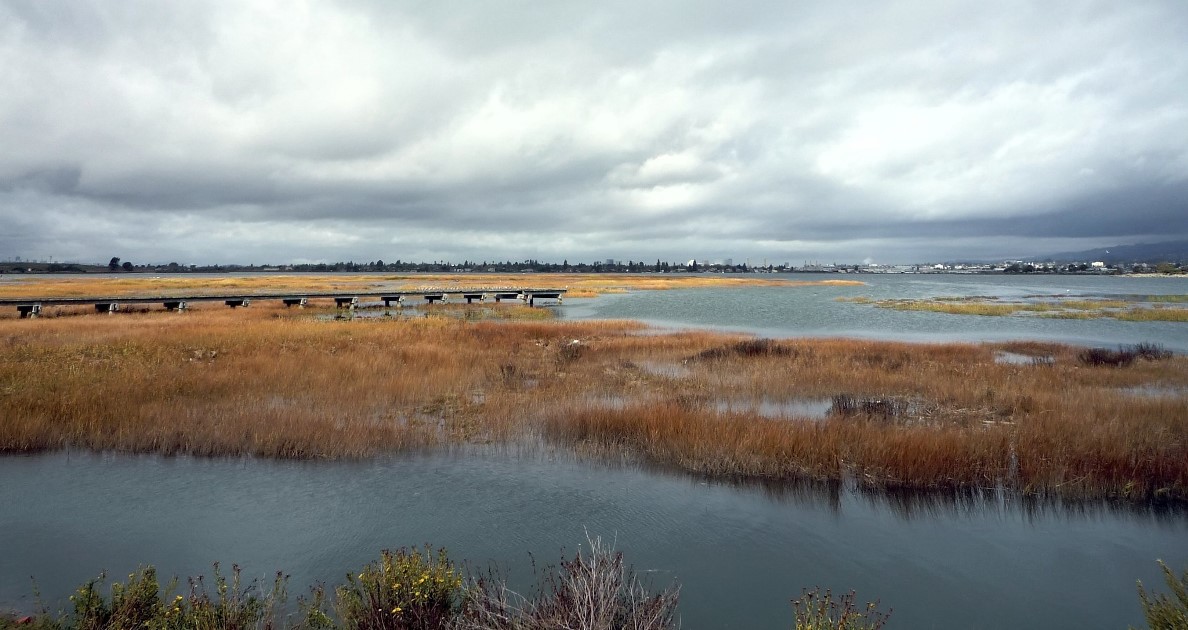From Bay Nature:
If you look up the Arrowhead Marsh along the Oakland shoreline on Google Maps, the arrowhead shape is striking. If you look closer, you see that the eastern half of the marsh is noticeably darker in color than the western half; there seems to be an imaginary line bisecting the marsh, and there might as well be.
In the 1970s, the Army Corps of Engineers introduced a species of Atlantic cordgrass from the East Coast, called Spartina Alterniflora, to the Alameda shoreline. The East Coast Spartina interbred with the native species of Pacific cordgrass, Spartina foliosa, spawning the hybrid Spartina alterniflora x foliosa. The hybrid species – and its further hybridized forms — reproduced at a much faster rate than the native Spartina foliosa and in the ensuing decades spread across Bay Area marshes, including Arrowhead.
As it spread, the non-native Spartina drastically altered tidal marshes to the detriment of the wildlife they support. It grew across once-open mudflats, which are important foraging habitat for shorebirds. It edged out Spartina foliosa and other native plants like pickleweed, which are crucial for the endangered salt marsh harvest mouse.
Click here to continue reading at Bay Nature.



